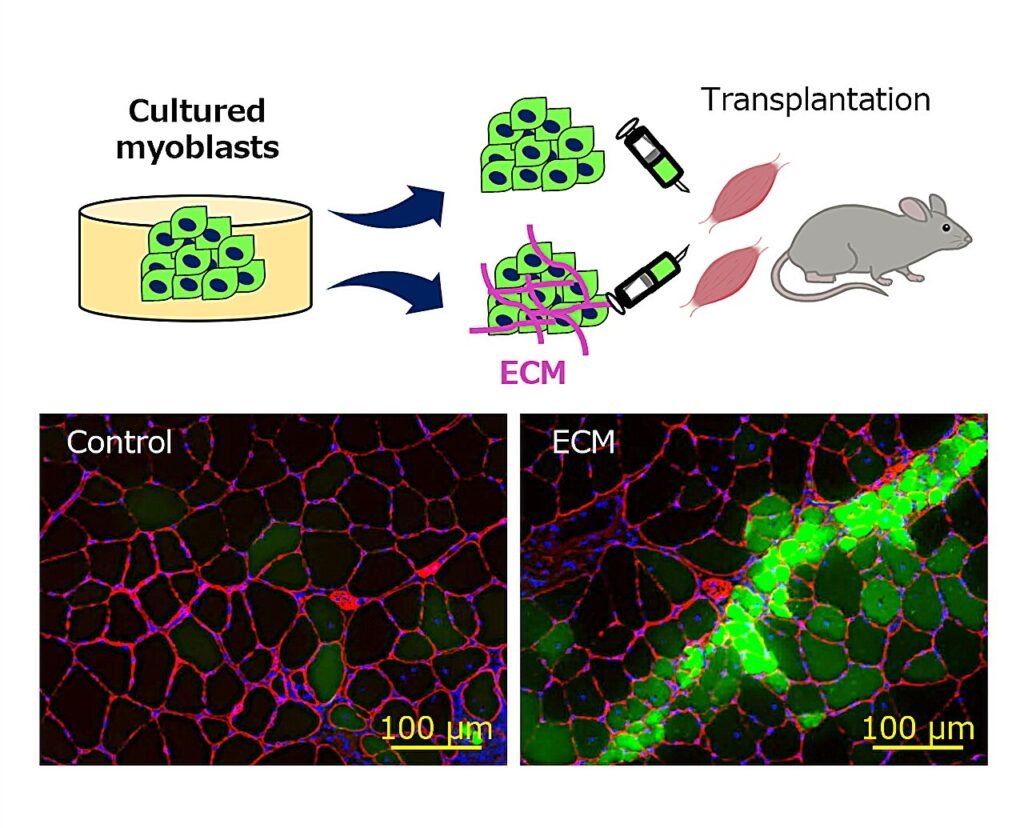Researchers at Tokyo Metropolitan University have made significant strides in treating age-related muscular atrophy using regenerative medicine. Their innovative approach involves implanting myoblasts, which are precursors to muscle fiber, onto healthy muscle without the need for prior scarring. By incorporating extracellular matrix (ECM) fluid into the implant, the team successfully grafted myoblasts onto unscarred muscle in mice. This breakthrough technique paves the way for using implantation to treat muscle atrophy caused by aging.
The study, published in the journal Frontiers in Cell and Developmental Biology, addresses the pressing issue of age-related muscular atrophy, which can greatly impact individuals’ quality of life and make them more susceptible to various diseases. While preventive measures like resistance exercise and proper nutrition are crucial, they are not always sufficient to address the widespread and immediate societal problem of muscular atrophy.
Traditional methods of implanting myoblasts have proven ineffective, as the new cells often fail to integrate into existing muscle tissue and eventually die off. However, the researchers discovered that myoblast grafting is more successful when the muscle is in a state of repair, such as during injury or in certain muscular diseases. This led them to explore the role of ECM, the scaffold that supports cell placement in the body, in facilitating myoblast integration.
By adding ECM to the injection fluid containing myoblasts, the researchers observed a higher rate of successful grafting onto unscarred muscle tissue in mice. While there were initial concerns about fibrosis caused by excess collagen fibrils invading healthy tissue, the team was able to mitigate this issue by adjusting the concentration of both ECM and myoblasts in the implant. As a result, they were able to increase the mass of a mouse’s tibialis anterior muscle by an impressive 10%.
Although the specific components of ECM responsible for promoting muscle cell integration have yet to be identified, this research marks a significant advancement in using regenerative medicine to address age-related muscular atrophy. The findings offer hope for developing more effective treatments for this widespread public health issue.
For more information, the study titled “Achieving myoblast engraftment into intact skeletal muscle via extracellular matrix” can be accessed in Frontiers in Cell and Developmental Biology. This groundbreaking research was conducted by a team led by Associate Professor Yasuro Furuichi from Tokyo Metropolitan University.
The original article and research were provided by Tokyo Metropolitan University and can be found on their official website for further details.


